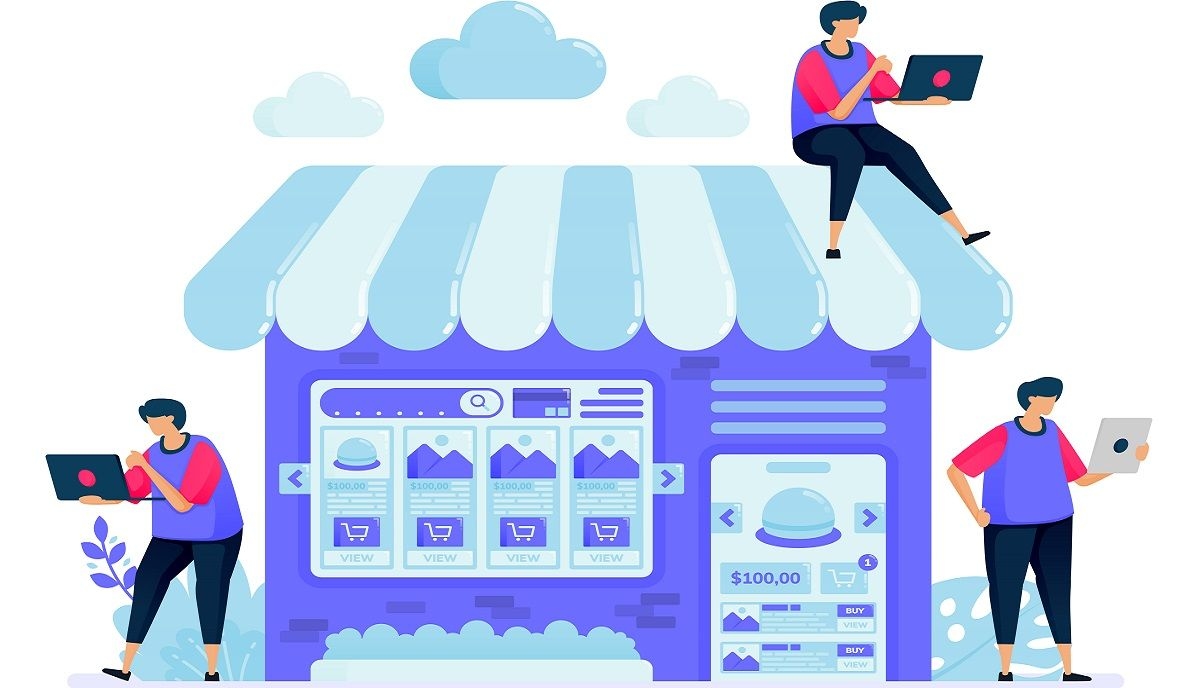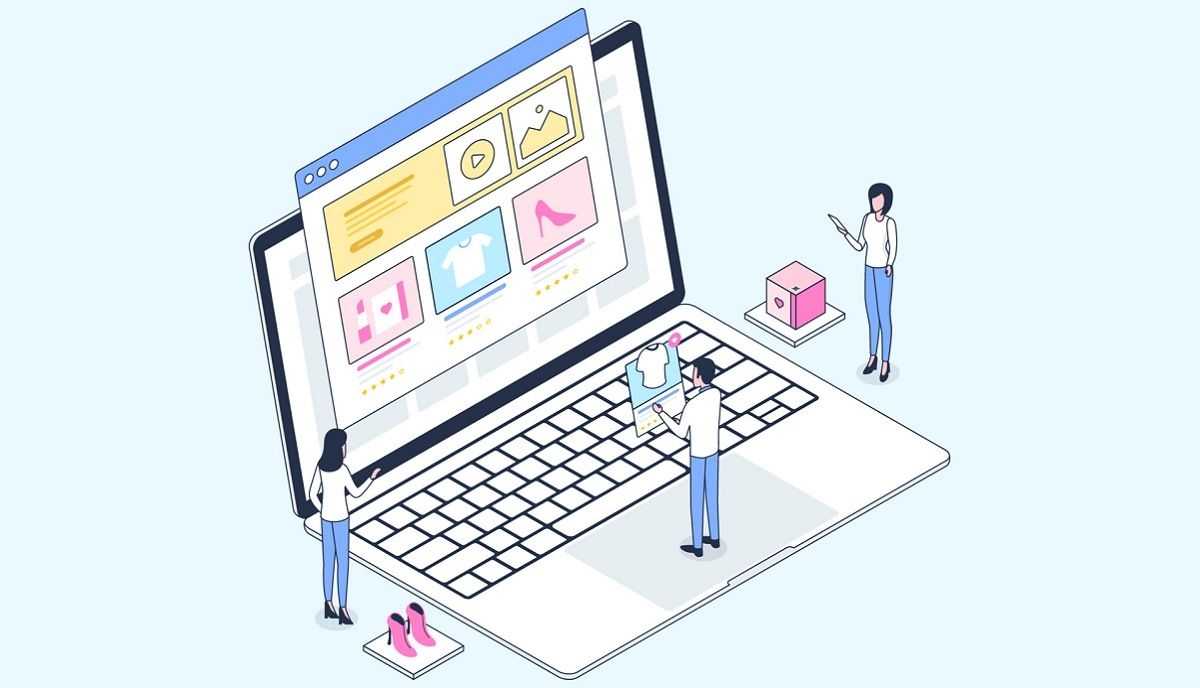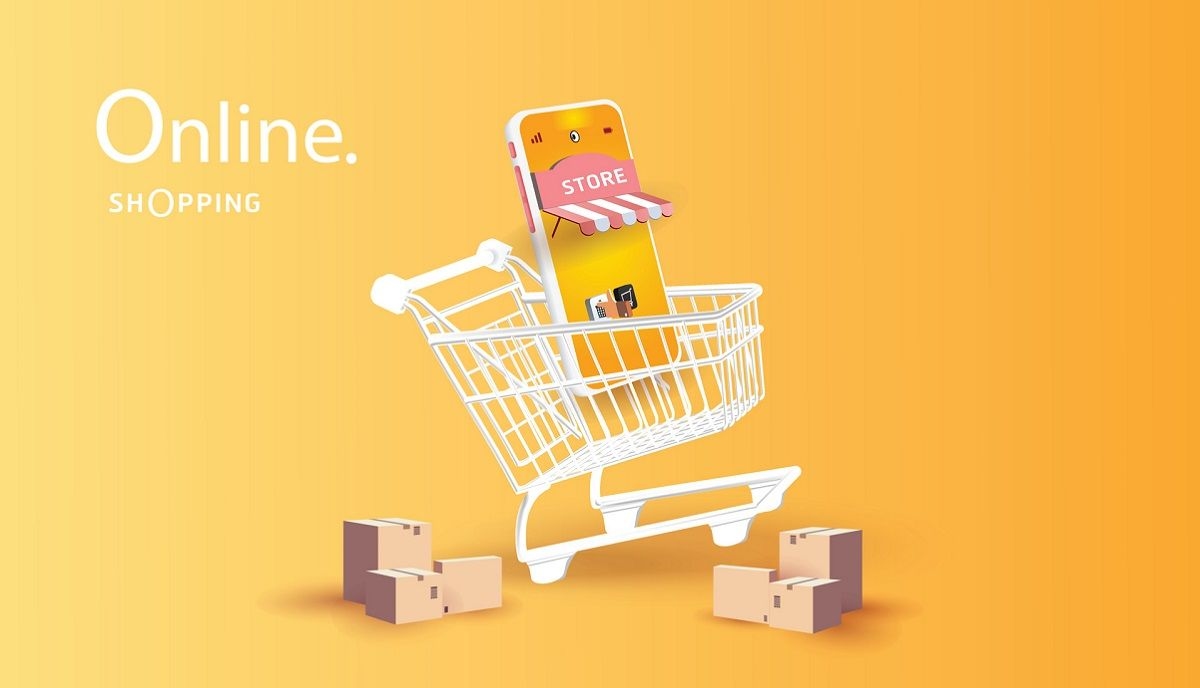Loyalty
How to Add Your App to the Shopify App Store: Complete Step-by-Step Guide
The ecommerce business is booming at an all-time high, with more companies and businesses stepping into the do...


Weekly newsletter
No spam. Just the latest releases and tips, interesting articles, and exclusive interviews in your inbox every week.
Tags
Shopify
Popular
Authors
Daniela Andreevska
Daniela has 6 years of experience in digital marketing for ecommerce businesses.
Aws Alnabulsi
Aws is the Co-Founder of Coretava, a complete retail ecommerce growth platform. He has 6+ years of experience in managing and growing ecommerce businesses.
Carlos Guerberoff
Head de Parcerias na Coretava. Especialista em desenvolver e fortalecer relacionamentos estratégicos. Orientado para resultados e apaixonado por construir conexões duradouras.
Henrique Letoldo
Head of Sales na Coretava. Com vasta experiência em liderança de equipes comerciais, busca constantemente impulsionar o crescimento e maximizar resultados. Apaixonado por inovação e estratégias de vendas eficazes.
Aws Alnabulsi
CEO e fundador da Coretava. Visionário e empreendedor apaixonado, lidera a equipe com visão estratégica e inovação, buscando transformar o varejo através de soluções tecnológicas.
The ecommerce business is booming at an all-time high, with more companies and businesses stepping into the domain than ever before. According to Statista, today the Shopify App Store is responsible for around 10% of the ecommerce software market worldwide. In this article, we’ll provide you with a step-by-step guide on how to list your app on the Shopify App Store to get maximum exposure to potential new customers.
Table of Contents
- What Is the Shopify App Store?
- How to List Your App on Shopify in 8 Steps
- How to Remove Your App from the Shopify App Store
- Start Selling Your App on Shopify
What Is the Shopify App Store?
The Shopify App Store is one of the largest platforms for ecommerce websites worldwide. It is a collection of apps that you can use to collaborate with Shopify for your business. The platform has gained popularity mostly because of the top benefits which the Shopify apps offer.
These applications help users with all sorts of business-related tasks. This includes anything from managing inventories and optimizing stock levels, to a wide range of applications that assists with all aspects of running an online business. Leveraging these applications is a great way to ensure your ecommerce business runs smoothly.
You can find all of these business applications on the App Store, which makes it easier for business owners to find the app of their choice. The Shopify App Store features more than just applications. It also provides user reviews for the applications available on the Shopify store.
Developing Better Understanding
The Shopify App Store is primarily a marketplace allowing sellers and merchants to browse and install apps in order to improve their online store functionality. You can find multiple applications on the platform, but not all are alike.
For example, some applications on the platform may underperform and may not be as efficient as they claim to be. They can have bugs or viruses in more serious situations. Thus, users need to do their research on the respective applications before deciding to install any of them.
Benefits of Adding Your App on Shopify
The Shopify App Store offers some of the best benefits for the platforms working in online business. Before you list your product on the Shopify App Store, you may be a bit skeptical. If you're not sure if adding your app to the platform is worth the trouble, let us share the details with you.
The most important pros of having your app listed on the Shopify store include:
Benefit #1: A Large Number of Potential Customers
What's the most important thing for an ecommerce store?
Having a good customer base to target.
The potential customers on the Shopify App Store are increasing by the day. With a large number of potential customers, there are more targeting chances and opportunities to grow your business. Since the Shopify App Store gets a lot of traffic, getting more users to your ecommerce apps won't be an issue.
When your app is available on Shopify, you don’t have to wait for customers to search for it on the internet to come across your product. They might be looking for something else on Shopify, see your app randomly, and get interested.
Benefit #2: 24x7 Customer Support
Shopify has one of the strongest networks for customer support in the US market as well as globally. The professionals on the platform are available all day long, any day throughout the week. With amazing customer support, your business is never alone. In case you face any issues on the platform, simply get in touch via:
- Phone
- Web chat
Moreover, with the platform, business owners can also choose between the following:
- Extensive documentation via Shopify Help Centre
- Community forums
- Advanced Shopify university guides
Benefit #3: Mobile Ready Platform
With advancements in technology, the majority of internet traffic comes from mobile devices. According to Statista, there are over five billion mobile internet users worldwide. Shopify understands all of this and offers a mobile app with fully responsive options for users.
The platform also offers free built-in mobile commerce providing a better GUI. This means that the ecommerce website looks great on every platform. Users on the Shopify App Store can use the offered features and ensure better purchases.
The best part is you can pick your free applications for iPhone and Android devices from their respective app libraries for better management.
How to List Your App on Shopify in 8 Steps
Now that you know why it makes sense to list your app on the Shopify App Store, it’s time to look how you can do this. While this might be a somewhat complicated process for a first-timer, our step-by-step guide will walk you through the process in enough detail to feel confident when you get started.
Step # 1: Pick the Right App Name
Like other online content, the application name is the first thing someone notices. The Shopify App Store optimizes the app rankings in results based on their names. When it comes to the names, the app names must be relevant and memorable and blend in keywords.
Moreover, the app name should also feature a functional aspect, and finding a balance between so many app elements can be a challenging part of the process. Don't haste into it, and take the time needed to carefully brainstorm possible ideas for your app name.
Here are the two main Shopify requirements to keep in mind for the app title:
- Be maximum 30 characters
- Explains the benefits
Step #2: Choose the Right Listing Graphics
With around 8,000 applications available for users (as cited by the Shopify website itself), it can be a bit challenging for you to stand out from the competition. Your Shopify App Store listing (a necessary step for all applications on the platform) should be visually appealing.
Having a visually attractive and catchy app listing is the quickest way to make a powerful impact on merchants browsing through the online marketplace. For the listing graphics, you need to work on the following elements, as per Shopify guidelines:
- High-quality app card
- App icon
- App banner
Keep in mind that the graphics you add to your application listing should reflect the app value. Moreover, they should consider customers’ privacy and data protection.
While the creativity element of the listing graphics makes a difference, you should still keep the guidelines set by the platform. In this way, you will avoid unnecessary complications and delays in the process of listing your app on the Shopify store. The faster your app listing gets approved and published, the faster you can start making sales to new customers.
Step #3: Create the Perfect Description for the Application
What's the first thing you notice about an application once you tap on it in the Shopify app library?
The Shopify app listing provides insights into the application. This information gives the users information on the application and helps them decide if it's the right choice for their needs.
Remember that your app descriptions make a big difference and can greatly impact conversions.
This brings the question: How does one create the right app descriptions?
The description is a step ahead of traditional names and app graphics and requires specific elements, including the following:
Tagline
The tagline within an application description is a blend of unique messaging and relevant keywords necessary to describe the app better.
Key Benefits
The app description should include information explaining the app value and benefits in short, concise words. You should aim to describe your app's value to ecommerce businesses in precise words for higher downloads.
Detailed Description
The solutions provided to users with your application are the biggest USP. You need to market your application and how it tops the competing application in every way.
Ensure the final descriptions are accurate and concise before uploading the app for listing. We also recommend using on-page SEO fundamentals to improve the application rankings on the platform.
For the descriptions, you should keep the following guidelines in mind:
- Write maximum 140 characters
- Don't add stats that violate Shopify regulations
- Avoid using terms like", "the best," "the first," and "the only"
Think of yourself as the customer while creating the app descriptions. These applications should have the functionality to support business growth. You should also segment the audience if the app targets a particular group to reduce confusion.
Step #4: Optimize All Support Channels
The kind of support customers get from applications is a key player in their perception. If you want to thrive in business, it's necessary to plan out effective support channels. These channels should provide an instant response for users.
You can take a step forward ahead and feature various support channel information. However, a common practice on the Shopify platform requires adding the following:
- Phone number
- Email address
- App web chat
With multiple options for support channels, ecommerce business owners can easily contact your experts in their time of need.
The more you facilitate users, the better it becomes for your app response. Take the time to set up each channel separately and ensure you have a customer support representative ready to assist users at any time.
Step #5: Ensure You Have All the Documentation Ready
Meeting the requirements for technical documentation is a necessary step of the pre-listing process. It impacts the success of app listing, the kind of product reviews you get, and more. The process requires going into the document in as much detail as possible.
For instance, the documentation should include information on how to install your application on a specific device. You can also use different content formats to optimize it. For instance, you can add the following:
- Video tutorials
- Help Center articles
- Product pages
- FAQs
After you have added the content to the website, it's necessary to ensure your documents are readily available for users on Shopify as well. The customers should be able to find, download, and view your application from the Shopify App Store.
Moreover, you should also share quick steps on how users can delete the application when required. While this information won't entice users to remove the app, it will put them at ease that they know how to do it should a need arise.
Step #6: Always Check If You Have Monitoring Options
Monitoring options in a Shopify application is the quickest way to avoid technical complications before they arise. Technical problems can happen for various reasons and can negatively impact user experience. With professional monitoring tools, you can resolve or altogether these problems even before they even occur.
Most of these tools are paid but are a great option for long-term app functionality. They can monitor the app's performance, traffic rates, user responses, customer reviews, and more. With the help of this monitoring software, you can resolve issues before they arise and negatively impact users, thus assuring the smooth running of your application in the long run.
Some good options for Shopify monitoring tools include:
- Better Uptime
- Hotjar
- Germain UX
Step #7: Set Up Demo or Beta Versions for the Application
One of the best ways to attract customers to your application is by offering them a quick demo. It's why beta versions of applications are popular with app designers.
The beta version of the application is a great way to get audience reactions to the developed applications before releasing them officially. You can perform A/B testing with a small audience group and create test environments for audiences.
As users experience the respective applications firsthand, it becomes easier for them to make the best decision. For instance, some users may prefer a mobile app** **offered by the online store.
By testing the application, users can determine whether or not the mobile version is worth installing. The designers can also make specific application changes to ensure the app is as perfect as it gets when finally launched.
Setting up beta versions may seem like a lot of work, but this can be an effective approach to ecommerce marketing and data collection.
Step #8: Set Up Payments and Billing
The payment and billing options on any Shopify app are necessary for its launch. Most professionals with Shopify App Store listings use billing APIs. With these APIs, users can list down the charges for the app and combine all customer invoices quickly.
You can keep customer records efficiently with the right billing and payment options. It can also help with ecommerce marketing and boost the store's conversion rate if the data is used correctly. The invoices provide substantial record-keeping to help with these tasks.
Completing these tech requirements ensures that users enjoy a seamless experience and have all the needed billing information almost immediately. You can also contact Shopify’s official Customer Support if you have more questions about the right billing API for your app. Take the time to explore and understand before you make a final decision.
By following the steps mentioned above, you can easily fulfill all requirements set by Shopify and ensure your applications get listed on the platform instantly. We recommend rechecking all the requirements before adding your app for listing.
How to Remove Your App from the Shopify App Store
Shopify App Store is one of the best platforms for users that want more customers and sales. However, in some cases, you might need to remove your application. The question is: How do you do it?
Following are the steps you need to take to delete your app from the Shopify store:
Step #1: Go to Store > Apps
Use your store owner’s account to log in to the Store. Go to Settings and open Apps.
Step #2: Click on Garbage Can
You will find a list of applications on the device. Find the App you want to delete and click on the garbage can icon.
Step #3: Confirm Removing the App
A pop up window will open asking if you permanently want to delete the application. Click Uninstall. When you apply to delete your application, Shopify asks users to state the reason for deleting the application. However, you can skip this step if you want, as it is optional.
Start Selling Your App on Shopify
Are you looking to explore more ventures for your online business? Ecommerce is much easier with the Shopify App Store. If you've been struggling with finding new customers and making sales, adding your application to this ecommerce platform offers some of the best options for business.
It has millions of users which increase brand exposure like no other marketplace. It is fully secure and provides some of the best updates. Thus, getting your app to the Shopify App Store makes a lot of sense.
If you’re looking for additional ways to boost the performance of your ecommerce website, Coretava is here to help you. With our 360 retail growth ecommerce platform, you can launch a loyalty program, enhance digital marketing, add personalization, and benefit from an omnichannel approach.
Click here to schedule a demo today!
Related Posts

Ready to Transform Your Retail Strategy?
Get a personalized consultation with our retail AI experts
Resources
Contact Us
+1 (415) 830-3900
info@coretava.com
Location
São Paulo, Brazil


